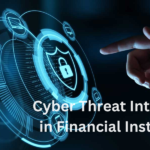Today, in a world which is a place where cyber risks are rising security of sensitive data is a must. Technology’s increasing dependence and connected systems have rendered people and businesses susceptible to data breaches, that could lead to financial loss in reputation damage as well as legal consequences. To reduce the risk both individuals and organizations must establish robust data protection procedures. This article discusses the necessity of monitoring sensitive data and offers valuable tips on how you can safeguard your precious data. While fixing this issue, if you facing a problem regarding the synthetics monitoring Here is the solution how to get synthetics monitoring to work in new relic.
1. Introduction
The digital age has brought sensitive information such as financial records, personal data as well as intellectual property to be electronically stored and sent. The term “sensitive data monitoring” refers to the practice of monitoring and safeguarding this important information in order to avoid unauthorized access to, disclosure, or theft. Through the implementation of robust procedures for monitoring sensitive data companies and individuals are able to protect the integrity, security, and accessibility of sensitive information.
2. Understanding Sensitive Data
Sensitive data refers to any data that, if disclosed may cause injury, financial loss, or even privacy breaches. It can include personally identifiable data (PII) including Social Security numbers, credit card information, as well as medical information. Furthermore, data that is sensitive may include trade secrets lists of customers, as well as private business details. Security of this data is vital in maintaining trust with clients as well as partners and other stakeholders.
3. The requirement for Sensitive Monitoring of Data Monitoring
The growing frequency and complexity of cyberattacks make the monitoring of sensitive data a need. Cybercriminals continue to develop ways to take advantage of weaknesses and gain access to sensitive information. Companies that do not monitor their confidential data run the risk of losses in financial terms, penalties from regulatory agencies as well as damage to their image. Individuals also have the possibility of identity theft, as well as various other cyber-crimes if the data they are storing is in the improper hand.
4. Essential Components of Sensitive Data Monitoring
4.1 Data Classification
Data classification is the process of the classification of sensitive data in accordance with the level of sensitivity it has and the risks associated with it. Through categorizing data, companies can prioritize their efforts to monitor and assign resources in accordance with. The classification of data also assists in the implementation of appropriate access control as well as data security measures.
4.2 Access Control
Access control measures assure that only authorized people have access to sensitive information. This requires the implementation of strong authentication methods, like complex passwords as well as multi-factor authentication, and establishing rights and roles for users. Access control guidelines should be reviewed regularly and revised to reflect any changes to the organizational structure as well as methods of handling data.
4.3 Data Loss Prevention (DLP) Systems
DLP devices are specifically designed to prevent and detect unauthorized storage or transmission of sensitive information. The systems employ a mixture of analysis of content, monitoring of networks, as well as methods to discover data-sensitive data and stop it from being transferred outside the network of an organization. DLP devices play an essential function in stopping data leakage as well as ensuring compliance with regulations and rules.
4.4 Intrusion Detection Systems (IDS)
Intrusion Detection Systems monitor network activity and logs of system activities in order to identify and react to security threats. In analyzing packets of network traffic and identifying suspicious actions, IDS can help organizations identify and stop the risk of security breaches that could cause unauthorized access to sensitive information.
4.5 UBA User Behavior Analysis (UBA)
User Behavior Analytics utilizes machine-learning algorithms to spot abnormal behaviors of users that could indicate an attack on security. Through analyzing patterns or deviations from norms, UBA systems can identify the possibility of insider threats or attempted access that is not authorized. UBA enhances other monitoring methods by providing live information on the activities of users and assisting organizations to respond swiftly to security-related incidents.
5. Best Methods to Monitor Sensitive Data
5.1 Implementing encryption
The encryption process is an essential part of protecting sensitive data. When data is encrypted at rest and during transit, businesses can guarantee that the data gets accessed or intercepted access is illegal, it will remain inaccessible and useless. Implementing secure encryption algorithms and key management techniques is crucial to maintain the security of data that is sensitive.
5.2 regular security audits
Security audits regularly conducted by security professionals help to identify weak points and weaknesses in methods of monitoring data. Companies should periodically conduct reviews to assess the security measures they have in place, evaluate procedures for responding to incidents and make sure they’re in line with the regulations of their industry. Security audits offer valuable insight into weaknesses and help companies to take proactive steps to improve their security methods.
5.3 Awareness and Training for Employees
Negligence and human error are common causes of data breaches. Companies should consider investing in extensive employee training that teaches employees about data security guidelines, the importance of protecting sensitive data, and the possible consequences of infractions. Promoting awareness and creating an environment of security within an organization will significantly decrease the chance of data breaches.
5.4 Incident Response Planning
A well-planned and effective incident response plan is vital to limit the effects of security-related incidents. Companies should create and frequently make updates to their plans for incident response detailing the procedures to take when there is an incident involving data breaches or a security attack. These include procedures to contain, investigate as well as communication and recovery. Continuous testing and simulations of plans for incident response could help pinpoint areas for enhancement and help ensure efficient as well as coordinated responses to security-related incidents.
5.5 Continuous Monitoring
Data monitoring that is sensitive must be a continual process, rather than a once-off task. Monitoring continuously involves the continuous identification and analysis of security-related events including system logs as well as user activity. With the help of monitoring systems that are robust and leverage automation and artificial intelligence, businesses are able to detect potential security threats quickly and react in a proactive manner.
6. The Function of Artificial Intelligence in Sensitive Data Monitoring
Artificial Intelligence (AI) technologies including machine learning as well as natural language processing are changing the way we monitor sensitive data. AI-powered systems can analyze huge quantities of data, identify patterns, and spot suspicious patterns that could indicate an attack on security. AI Technology and algorithms also can simplify the process of classifying data, thereby making it easier for businesses to focus their efforts on monitoring and focus their efforts on the areas that are most important to them.
7. The Challenges and Challenges and
Although monitoring sensitive data is vital, it’s not without its challenges and limits. Businesses may have budget restrictions and a shortage of highly skilled staff and issues of compatibility in relation to the existing IT infrastructure. Furthermore, the constantly evolving nature of cyber security threats requires regular updating and adaptation of surveillance strategies—especially for businesses in fast-growing tech regions like IT Security Houston—in order to keep one step ahead of adversaries.
8. Conclusion
In a world where data is a vital component of both businesses and individuals and organizations, monitoring sensitive data plays an essential role in protecting important data. By implementing a complete security strategy for data that includes access control, data classification as well as protection systems against data loss as well as intrusion detection systems, and user behaviour analytics companies can drastically lower the chance of data breach and safeguard their reputations, financials, and confidential information.
Our Expert covered many following topics:
How Blockchain Technology Can Enhance Privacy and Security in the IoT Ecosystem
Web3 Technology The Future of Decentralization
How Robotics Technology is Shaping the Future A Comprehensive Overview
If you have any question, suggestions, or good topic for contributing then let us know.
















